5 AI writing assistants in action
We tested five popular generative AI tools to write blog posts. Here's what we discovered.
This is part one of a two-part article. In this part, we look at ChatGPT, Writer and Jasper. In part 2, we’ll look at WriteSonic and Copy.ai.
ChatGPT’s launch in November 2022 spurred a debate among marketers. Proponents of generative AI envision a future where these highly sophisticated tools will replace human writers. Some are confident in AI’s capability to deliver high-performing copy for ads, landing pages and even white papers and ebooks.
In turn, more realistic marketers and copywriters assert the stark superiority of human writing over AI. “It cannot connect the dots like we can. It can’t be personal like us, human like us. It can’t feel the gravity of a profound moment like birth. These are uniquely human things. And so, AI cannot write like us,” wrote Eddie Shleyner, founder of VeryGoodCopy.
But there is a middle ground. We can leverage generative AI tools to level up the content creation process. It takes considerable time and effort to write high-quality blog posts. Using AI tools as writing assistants can potentially save costs and resources.
Because not all tools are created equal, we tested five popular AI writing assistants today. While some results were impressive, the outputs tended to be repetitive. This is a key theme across these generative AI tools, highlighting the need for human oversight and careful editing.
Here are the five AI writing tools we’ll cover:
- ChatGPT
- Writer
- Jasper
- WriteSonic
- Copy.ai
1. ChatGPT
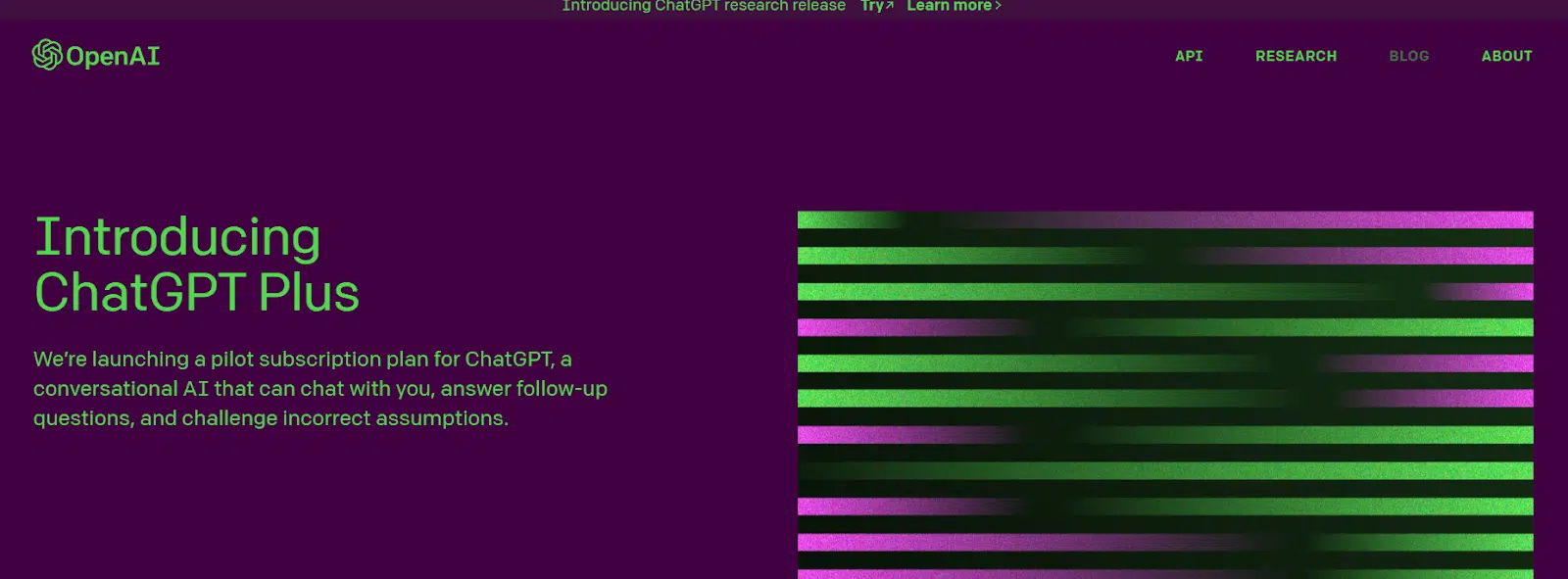
ChatGPT (Chat Generative Pretrained Transformer) is a high-profile natural language processing (NLP) model that enables AI-powered, real-time conversations. It is great for generating short content, like creative ads, persuasive copy, scripts and more.
But there’s a caveat to generating blog posts: you never know what outcome you’ll get, its length and completeness. Aside from that, you will have to deal with repetitive word patterns and identical sentences.
To some extent, you can bypass the limitations with creative prompts and by “writing” your piece in several rounds with follow-up questions.
Dig deeper: ChatGPT: A marketer’s guide
How to write a blog post with ChatGPT
Step 1: Write a title
ChatGPT works great in generating creative headlines. Here’s a sample prompt to get started:
- “Act as a copywriter. You’re writing a piece about [your topic]. The goal of the piece is [your goal + target audience]. Adopt the tone of voice of [a particular person or your company] and create 5 engaging headlines to stand out in the SERPs.”

Step 2: Craft an engaging introduction and outline
ChatGPT can help here if you prompt it well, for example:
- “Write an engaging intro to the article [your topic] following [your company] tone of voice. Use American English, conversational and informal style. Start with [your target audience] familiar pain points and provide a short solution. Generate three outputs. Separately, utilize the AIDA and PAS frameworks and write the 4th and 5th intros accordingly.”
And you’ll get something like this.

Not bad for an AI tool, but it’s still raw. Your next move is to try different prompts and specify which parts you don’t like. If you stay in one chat, it will pick up your writing style and adjust its responses accordingly.
To achieve the best results, run several rounds of prompts and take the most compelling parts from each intro to create an effective opening line. Then, repeat this process to develop an outline.
You might think it’s a lot of work to write the lead — you’re right. Initially, writing with ChatGPT can eat up your time. But after some trial and error, you’ll eventually develop better prompt templates and save time.
Step 3: Generate an article
Try writing in blocks. For starters, take one heading and ask ChatGPT to expand on it. Specify the following:
- The outcome you expect to get.
- The goal of the heading.
- Structure (i.e., list best practices in bullets).
For instance, I asked it to put together best practices for visuals for florist websites, and here is what I’ve got.

All the points are valid, so you can piggyback on some of them as a writer.
Note: You can also ask ChatGPT to back up its outputs by referring to research, case studies, customer success stories, etc. The caveat: it often makes up stats and research, so it’s better to leave this part to humans.
Pro tip: Make ChatGPT provide fresher data from the web, research, case studies and more with the WebChatGPT Chrome extension. (It’s also available for Firefox.)
What else can you do with ChatGPT blog post writing?
- Create hooks for repurposing your article on social media.
- Generate catchy SEO titles and meta descriptions.
- Summarize any content with the Summarize Chrome extension.
- Proofread a piece/paragraph.
Pricing
- Free for all users. Available when demand is low. Some countries currently do not have access.
- The Plus plan costs $20 per month. Available even when demand is high and comes with faster response speed.
2. Writer

Here’s what you can do with Writer:
- Get real-time feedback on grammar and style.
- Generate synonym recommendations for better rephrasing capabilities.
- Create catchy titles and headlines from prompts or already existing content.
- Generate a blog post from an outline or step-by-step from scratch.
- Transcribe and summarize audio and video recordings.
Writer also tries to mimic human writing style by understanding the context behind every sentence and generating natural-sounding suggestions accordingly. It can also pick up your brand voice and style guides to ensure consistent content.
How to generate a blog post with Writer
There are two ways to start crafting an article with Writer — from scratch or with an outline. Since content writers are usually given an outline to work with, let’s see how Writer can fill in the gaps.
Choose the Blog posts template and fill in the working title, summary, and headings. Click Generate content. Wait for a while and enjoy the generated article.

Unfortunately, I ended up with an article full of fluff, general statements and an overblown intro. I might salvage a few paragraphs.
Here’s the intro:

And here’s some of the body text:

The first two paragraphs were good, but the rest didn’t bring real value to the reader. In comparison, here’s a human-written version.
Easy summary
Extract the juice from your article in bullet points for a TL;DR section or social media in one click. This feature saves heaps of time in summarizing text.
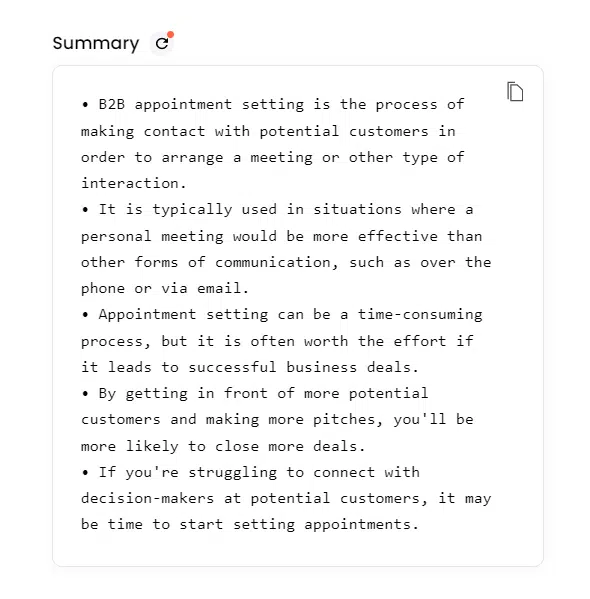
Event takeaways
The Event takeaways feature is impressive. It transcribes and summarizes podcasts, webinars, and other video and audio content types in minutes.
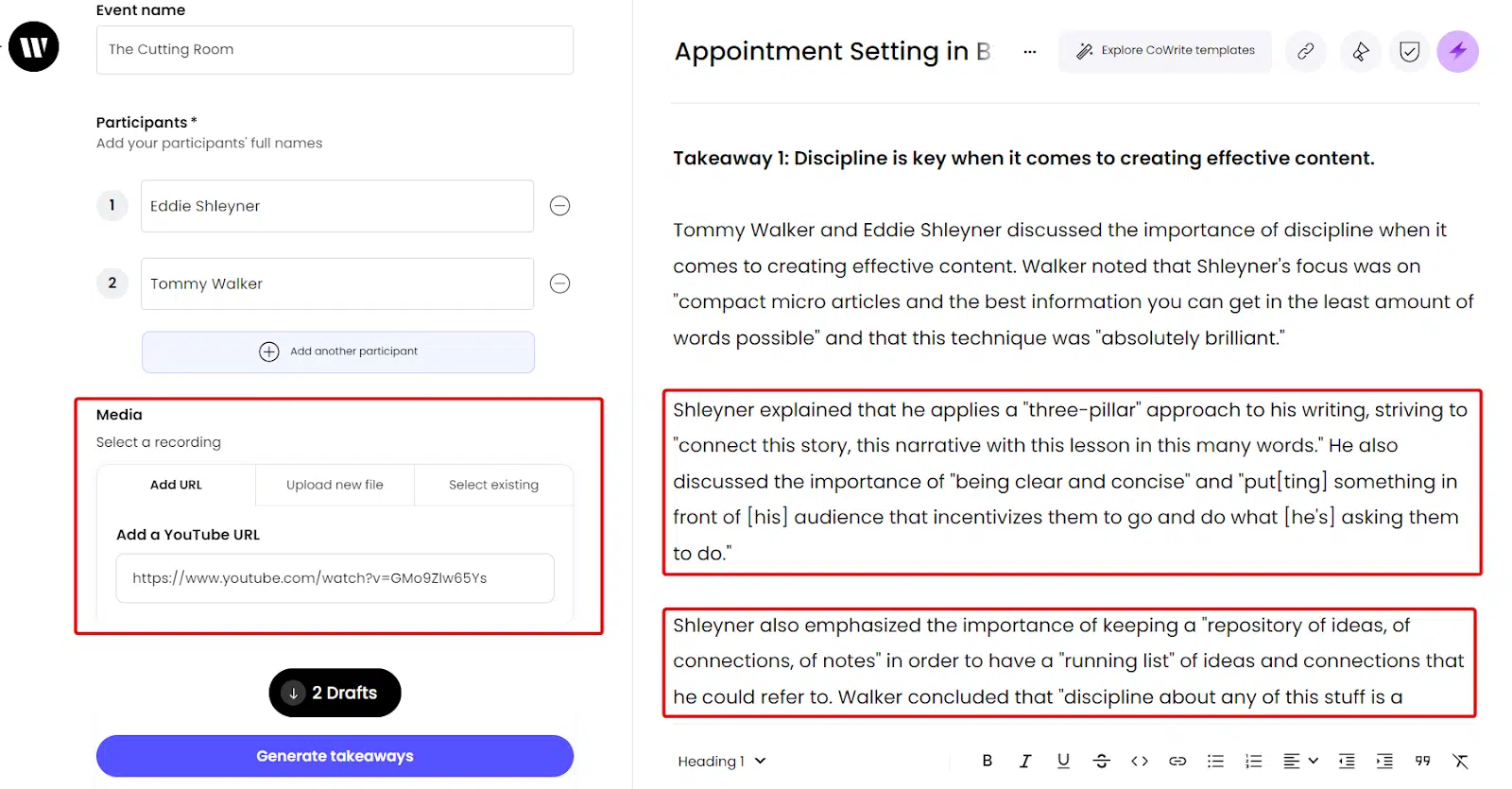
Keep writing
Enter a sentence and prompt Writer to help you get started. I like to use this feature for generating examples or completing simple sentences. For instance, I can start with “Email marketing is …” and make Writer craft the whole paragraph.
See how it works.
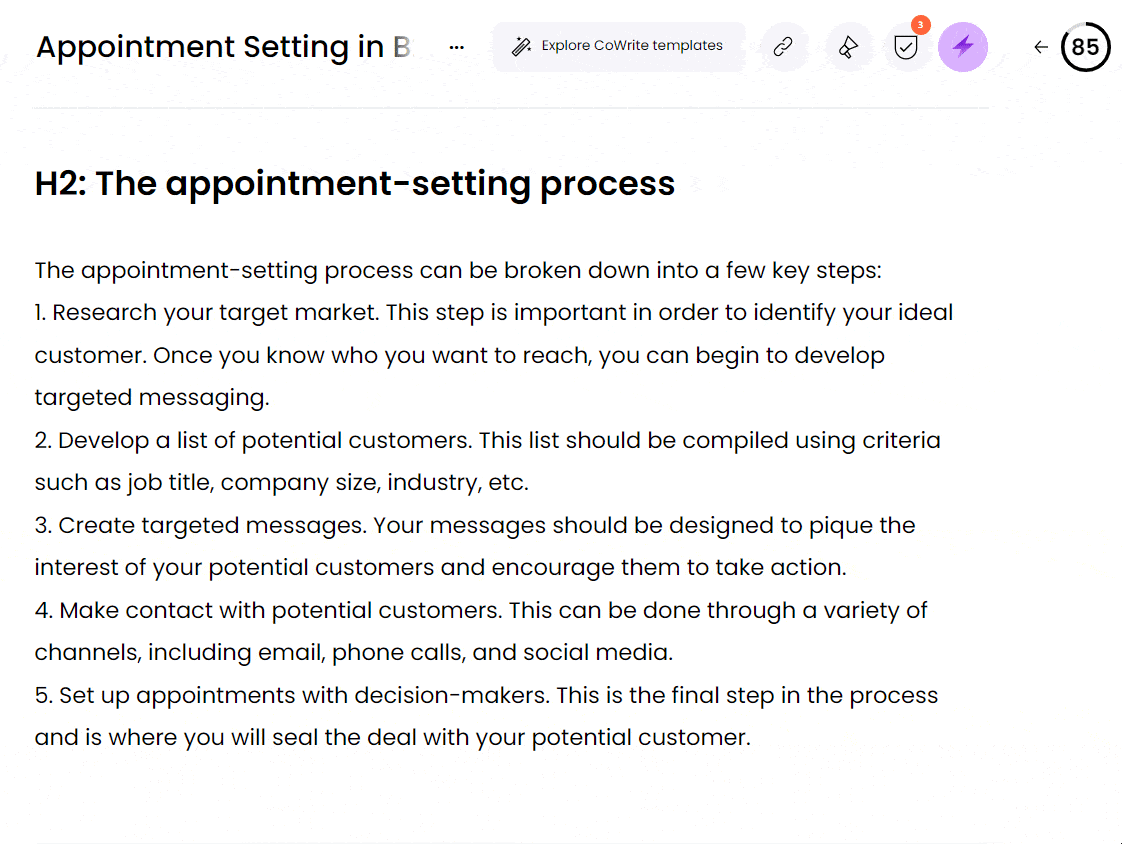
Pricing
- Start with a 14-day free trial.
- Upgrade to the Team plan for $18/month. Allows 1-5 people.
3. Jasper
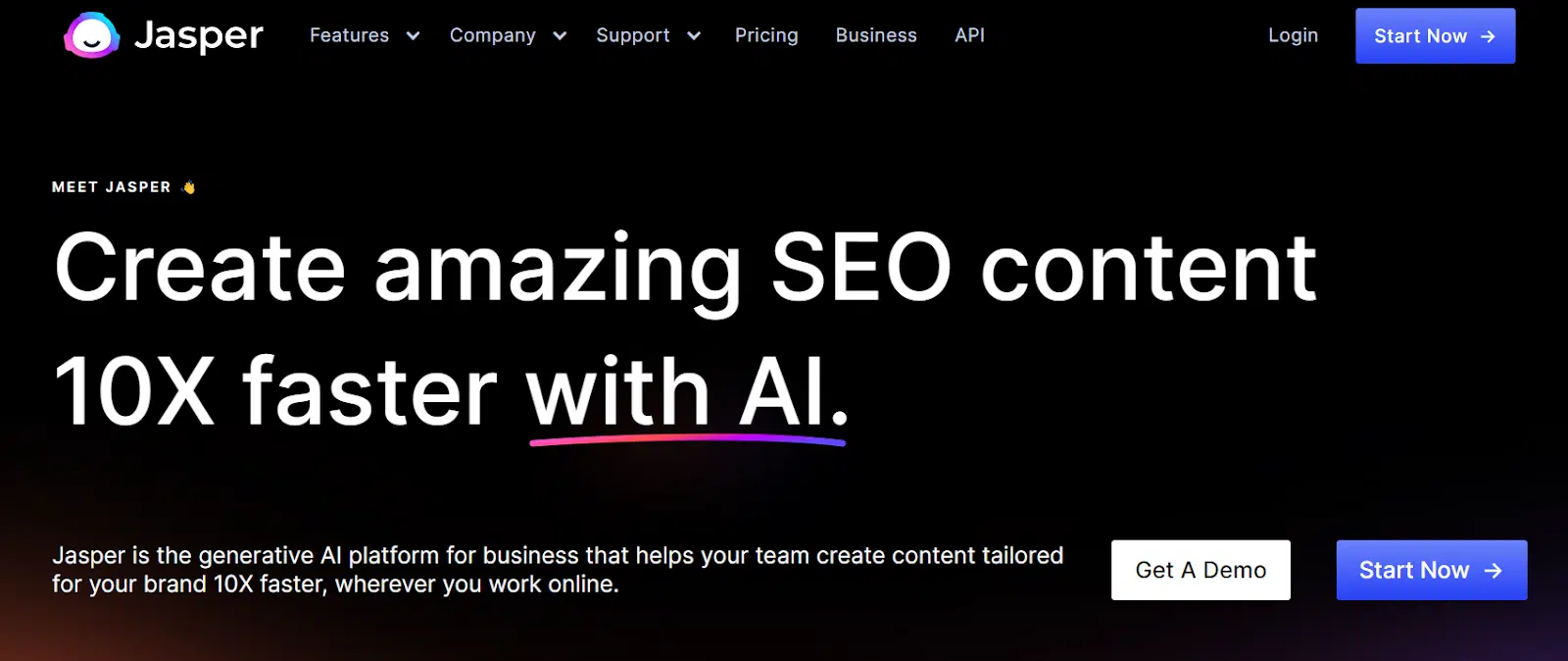
Since its launch in February 2021, Jasper has become a vital tool for many writers and content creators. In less than two years, it claimed Unicorn status after a $1.5 billion valuation.
This is my preferred tool among all AI writing assistants alongside ChatGPT.
How to generate a blog post with Jasper
There are several ways to create an article. You can opt for template-based writing if you’re a beginner or use its advanced features to get creative and develop unique content ideas.
Tip 1: Generate a full blog post with one click
Template-based writing with the One-Shot Blog Post feature enables you to generate a blog post from an outline. Just feed Jasper the main topic (a brief), select the tone of voice and target audience. Watch Jasper craft a complete article in minutes.
I used the same prompt from the Writer example: “Write an article about B2B appointment setting.”
The following sample is what you can expect for B2B content. It serves as a good outline with talking points that still need a human writer to fill in the gaps and expand on ideas. Jasper can also help with the latter in Commands mode (more below).
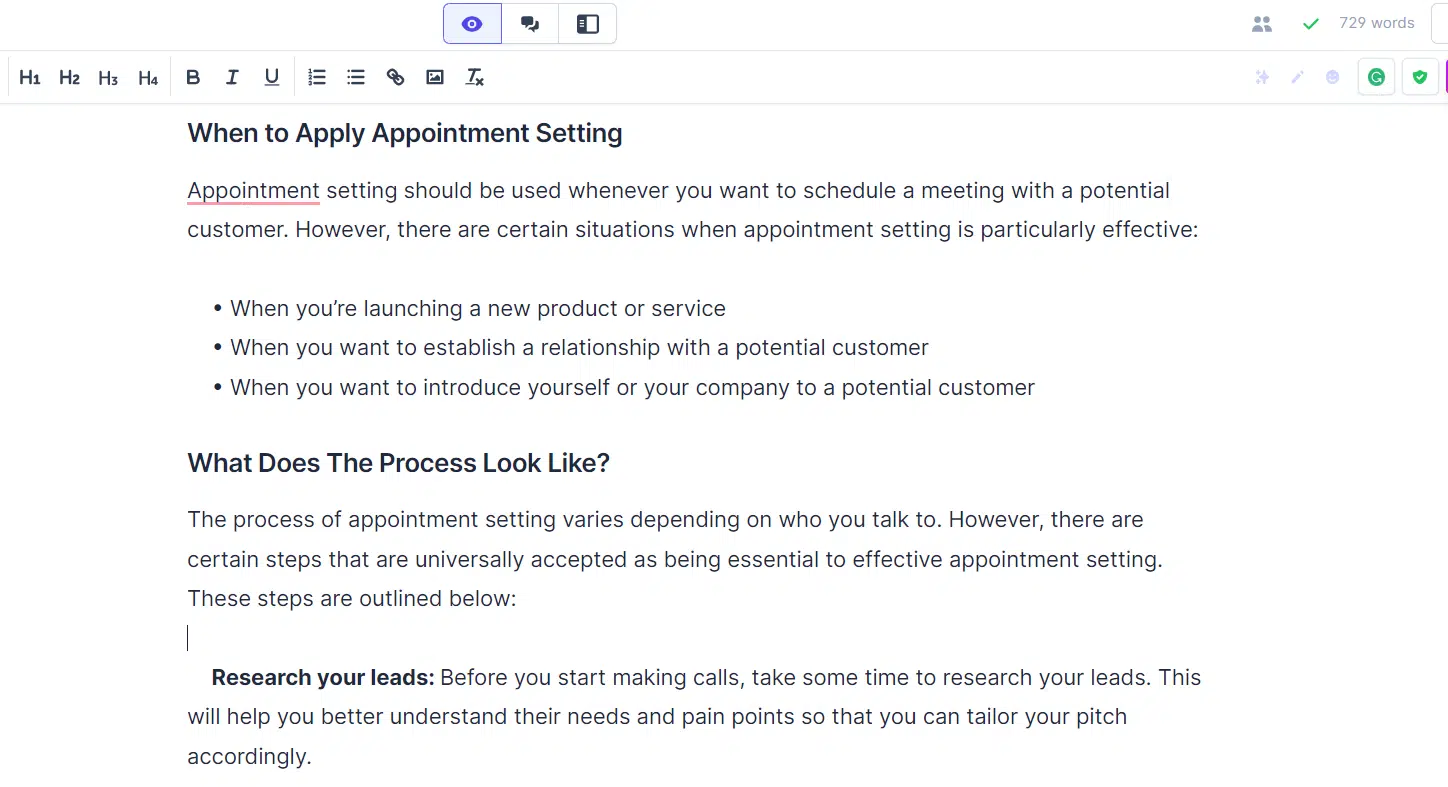
Tip 2: Assemble a blog post from intro to conclusion with advanced settings
Once you have keywords and the blog post’s objective, you can turn it into an engaging B2B article with a title and an outline. To do this, head to Documents in Boss Mode (find it in Templates).
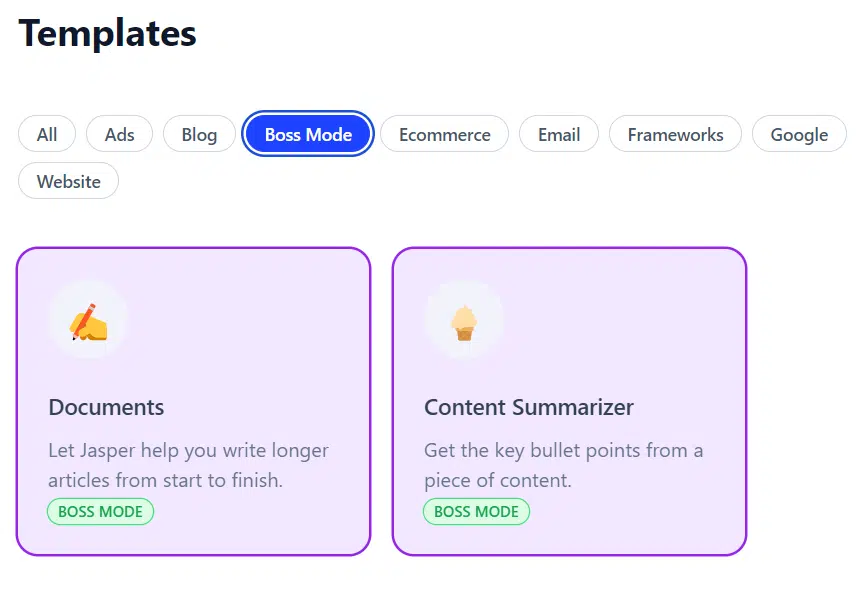
Now, choose Blog Post or Blog Post Starter from Workflows, and start guided writing with an AI assistant.
First, generate 3-5 or more intros in one click and regenerate the content if you don’t like it. Below is a generated version from the first attempt, and it’s reasonable to keep it as a skeleton for further edits.
Pro tip: Set your company’s tone of voice and audience to write as closely to your brand style as possible. You can specify several tones, like conversational, informative or persuasive.

Next, create an outline in one click. Not sure whether you should keep it? Copy and save it before commanding Jasper to try again.
Here’s the first version of the outline (see below).
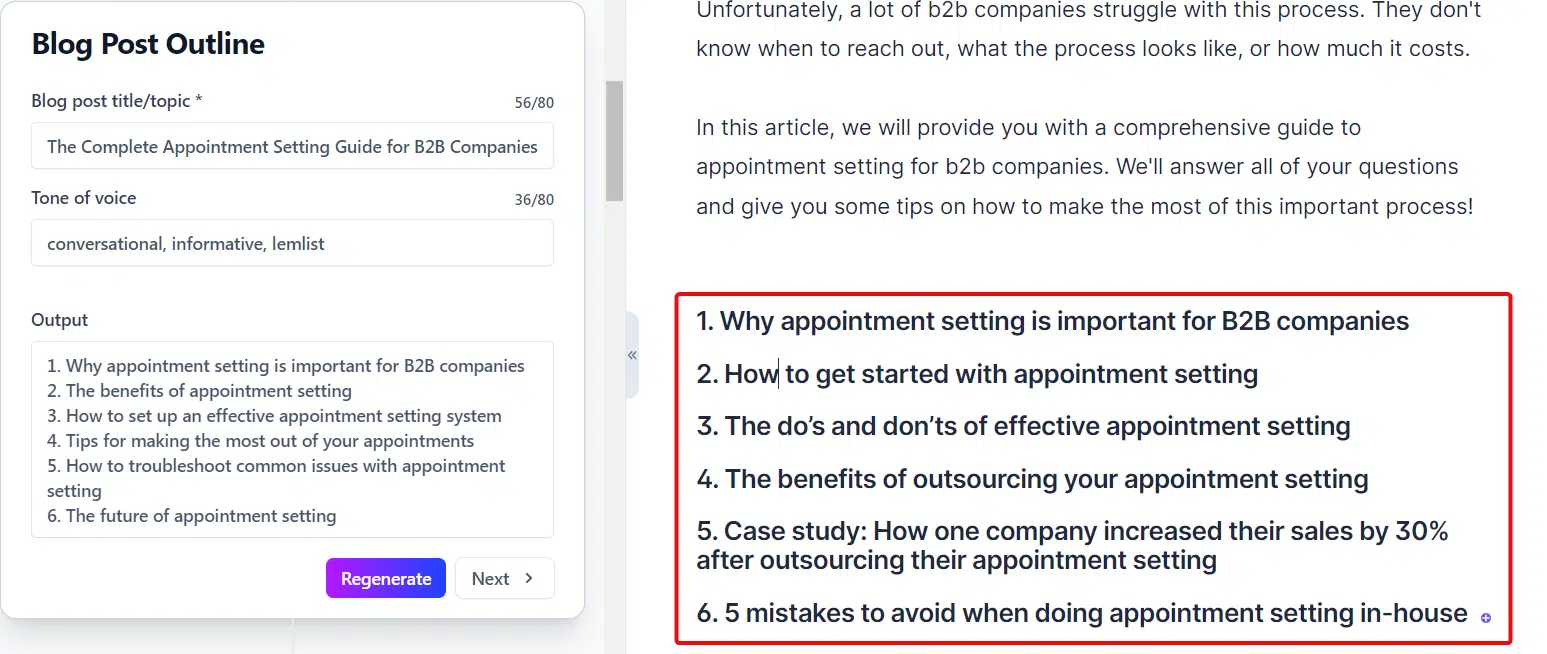
You can start filling in the gaps with the tool. At this point, Jasper has already remembered the content structure and is ready to generate paragraphs for each subheading.
Switch to Focus Mode and co-write a piece using commands and auto-completion. No other AI writing tools offer these features of similar quality. Co-writing with Jasper can take the words out of your mouth.
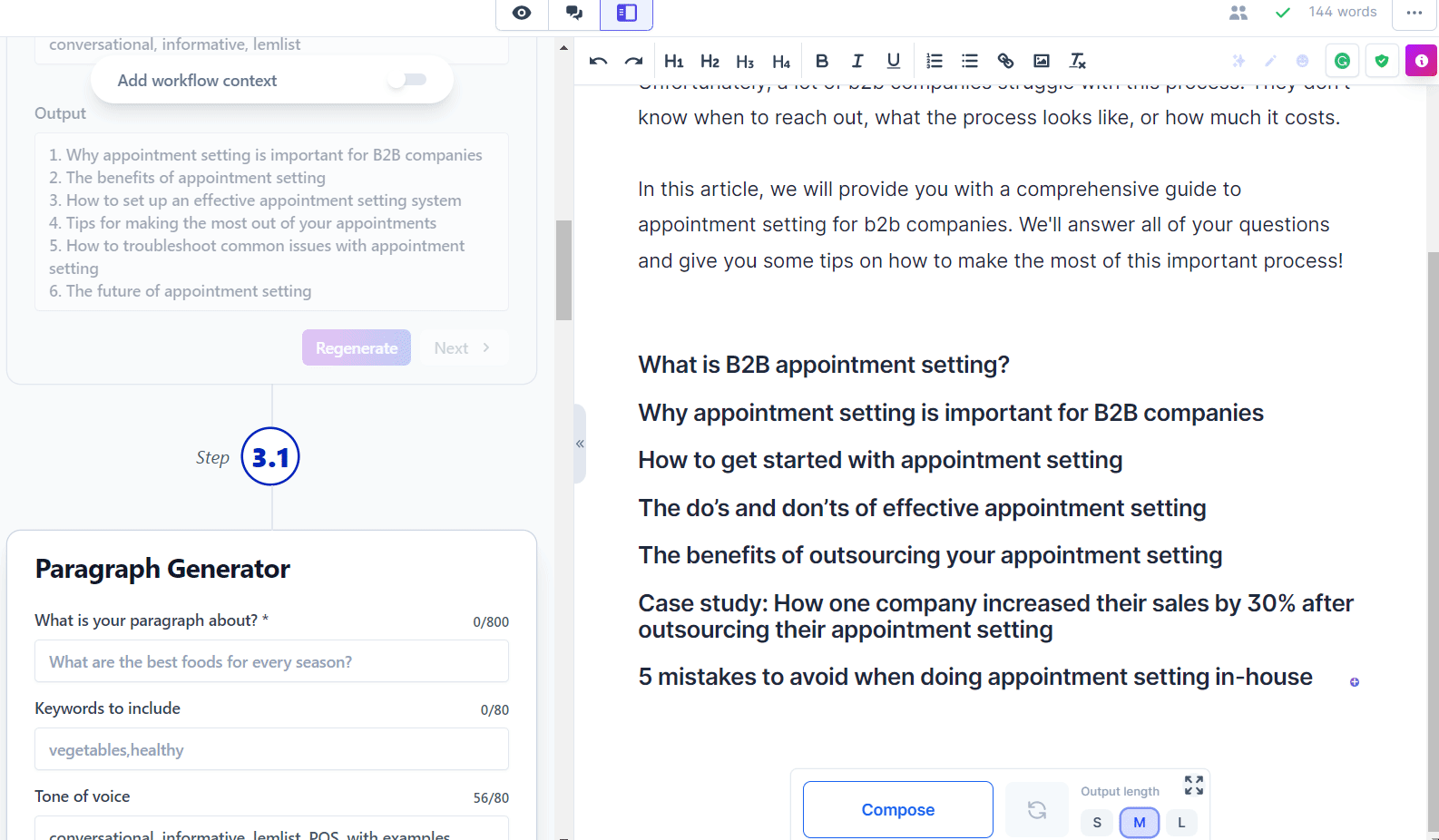
Pro tip: Use commands to enrich your piece with relevant examples in seconds, e.g., “How to calculate ROAS” or “Create an example of a curiosity-driven outreach email to sell [your product].”
What else can you do with Jasper for blog post writing?
- Generate FAQs.
- Rephrase your content to make it simpler, more engaging or funnier — or tailor it to a specific tone of voice.
- Generate listicles.
- Get the key points (or TL;DR) from a piece.
- Create snappy SEO titles and meta descriptions.
Pricing
- Access all features with a 5-day free trial.
- The price starts at $59/month and includes 50,000 words/month.
In part 2 of this two-part series, we’ll look at AI writing tools WriteSonic and Copy.ai.
Contributing authors are invited to create content for MarTech and are chosen for their expertise and contribution to the martech community. Our contributors work under the oversight of the editorial staff and contributions are checked for quality and relevance to our readers. The opinions they express are their own.
Related stories